Category: Uncategorized
Denali in Alaska 2024
Denali, also known as Mount McKinley, (its former official name), is the highest mountain peak in North America, with a summit elevation of 20,310 feet above sea level. It is the tallest mountain in the world from base-to-peak on land, measuring 18,000 ft. With a topographic prominence of 20,194 feet and a topographic isolation (the distance to the nearest peak of equal or greater height) of 4,621.1 miles. Denali is the third most prominent and third-most isolated peak on Earth, after Mount Everest and Aconcagua. Located in the Alaska Range in the interior of the U.S. state of Alaska, Denali is the centerpiece of Denali National Park and Preserve.From Wikipedia.
It is said that only 30% of Denali Park visitors are fortunate enough to see the mountain which is usually obscured by clouds. Only 5% are able to see both peaks. We were obviously extremely fortunate with weather.
https://www.nytimes.com/interactive/2021/04/13/climate/muldrow-glacier-alaska-mount-denali.html
Eastern Tiger Swallowtail Black Morph
It’s very easy to see the difference between a male and female Tiger Swallowtail. The female Tiger Swallowtail’s tail end of her lower wings are more vividly colored, with strongly pronounced cells of orange and a greater degree of iridescent blue. This is likely a female.
https://www.inaturalist.org/guide_taxa/357989
Monarch Butterfly in Wisconsin
Red Admiral Butterfly in Wisconsin Loving the Echinacea
Identifying characteristics:
– this species is a black butterfly with white subapical spots and characteristic red bands, one in the middle of the forewing and one on the margin of the hindwing. The hindwing is a mottled black color that makes this species difficult to see on a tree with its wings closed.
Hummingbird Moth
Snowberry clearwing moth (Hemaris diffinis).
Perhaps one of the most delightful insect visitors to your garden is the hummingbird moth. Several species of the genus Hemaris deserve this name and for very good reason. They fly and move just like hummingbirds. Like them, they can remain suspended in the air in front of a flower while they unfurl their long tongues and insert them in flowers to sip their nectar. They even emit an audible hum like hummingbirds. Quite often inexperienced garden visitors notice what they think is a tiny hummingbird fleeting among flowers such as bee balm (Monarda). They listen incredulously when one explains to them that what they just saw was not a bird but a moth.
Hummingbird moths are rather plump; the tip of their tail opens into a fan. They are usually of a rich reddish brown color, at least in part. Like all Lepidoptera their wings are covered by scales; some species lose many of the scales from patches on their wings, so they are called clearwing hummingbird moths. Like most moths they have a very long tongue which they carry rolled under their chins and that they use to reach the nectar of long-necked flowers. Such nectar is inaccessible to many other flower visitors, so it seems that these flowers prefer long tongued pollinators and try to keep the others away.
These day-flying moths are widespread in North America. In the Old World, there are several species of hummingbird moths. Some of these species are closely related and all belong to the same genus, Hemaris. The British prefer to call them Bee Hawk-Moths. There are four species of hummingbird moths in North America. The most familiar ones are the Snowberry Clearwing (Hemaris diffinis) and the Hummingbird Clearwing (Hemaris thysbe). They are both widespread throughout North America, with the former perhaps being more abundant in the west and the latter in the east. Like the majority of moths and butterflies, the adult hummingbird moths feed on nectar from a variety of flowers, but their larvae need more specific food plants, such as several species of honeysuckle, dogbane, or some members of the rose family such as hawthorn, cherries, and plums.
Credit:
https://www.fs.usda.gov/wildflowers/pollinators/pollinator-of-the-month/hummingbird_moth.shtml
Wrens Making Their Nest
Great Crested Flycatcher Feeding the Young
Breeding and Nesting
Great Crested Flycatcher: Four to eight white to buff eggs marked with brown, olive, and lavender are laid in a nest filled and lined with grass, weeds, bark strips, rootlets, feathers, fur, snake skin, onion skin, and cellophane. Nest is usually built in a cavity, abandoned hole of another bird, or bird box.
Foraging and Feeding
Great Crested Flycatcher: Eats variety of large insects, including beetles, crickets, katydids, caterpillars, moths, and butterflies; also eats fruits and berries; forages by flying from a perch to snatch insects from foliage, mid-air, or on the ground.
Wisconsin Cardinal 2024
Beautiful bird that northern cardinal. Sitting in the birch tree awaiting a chance at the feeder. Red and green almost like Christmas despite the summer weather. This guy has had some damage to his beak but otherwise pretty handsome. Despite the distance of 20 yards, an 800 mm lens can provide some nice detail.
Great Crested Flycatcher
The pair have returned this year to again use the nesting box we set up intended for a Wood duck couple. They apparently like the extra room! Per iBird Pro, although both parents will inspect potential sites, building of the nest is done almost entirely by the female, while the male closely guards its mate. Cavities that are large enough in size and opening are the preferred nesting sites, whether naturally occurring or excavated by other species as well as use nesting boxes and other man-made structures.
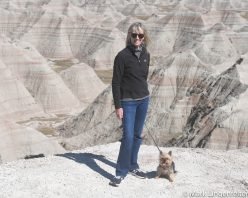








































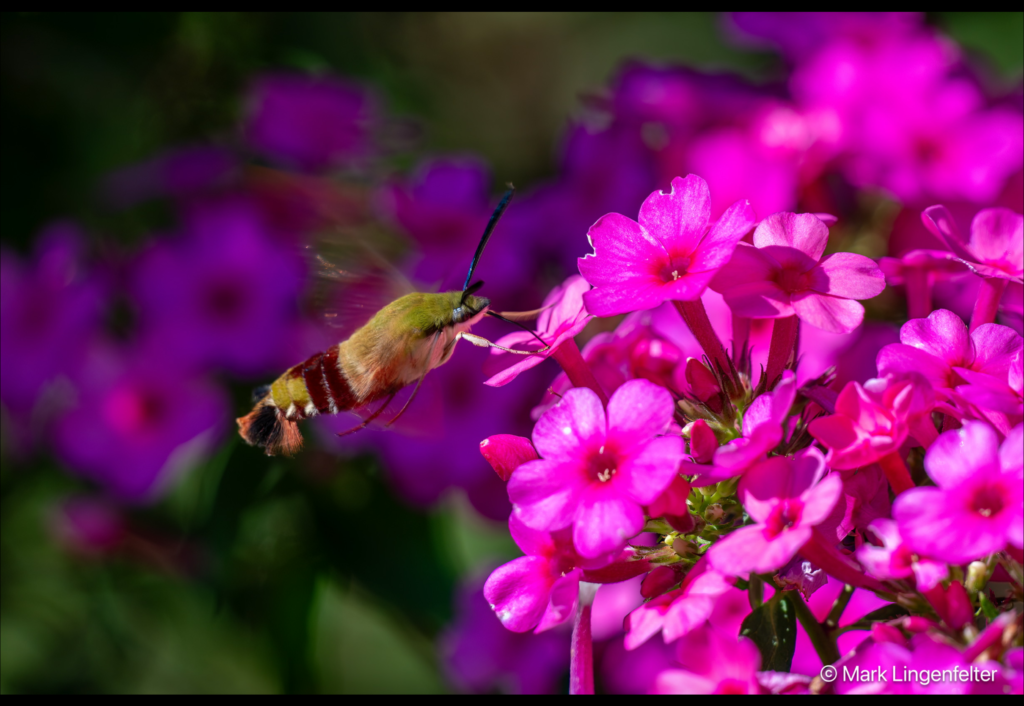
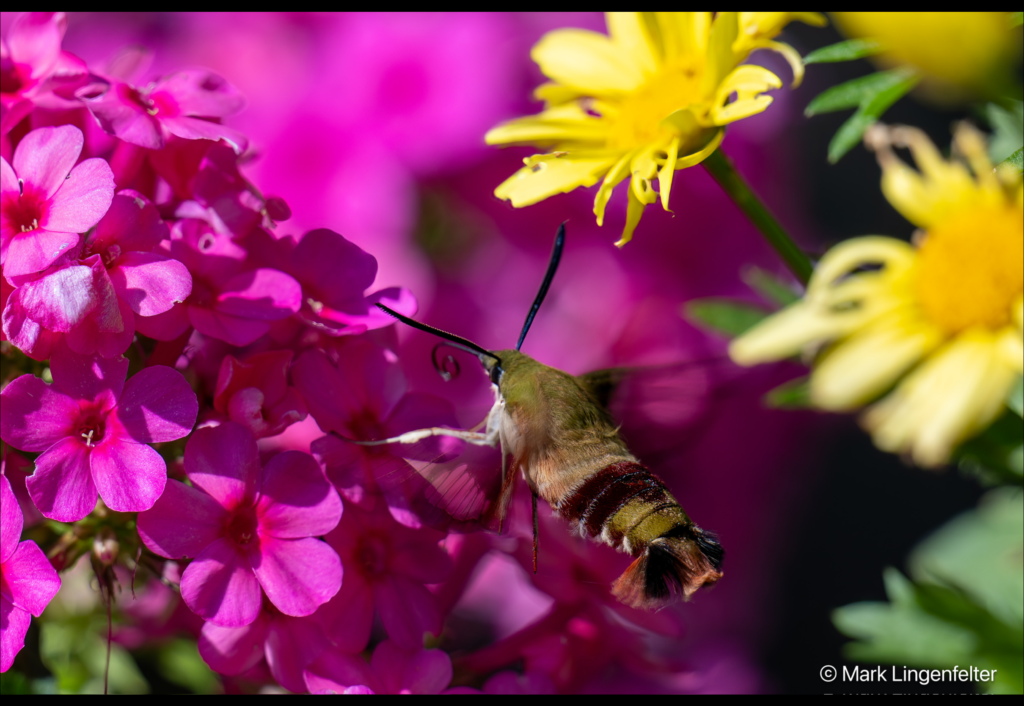
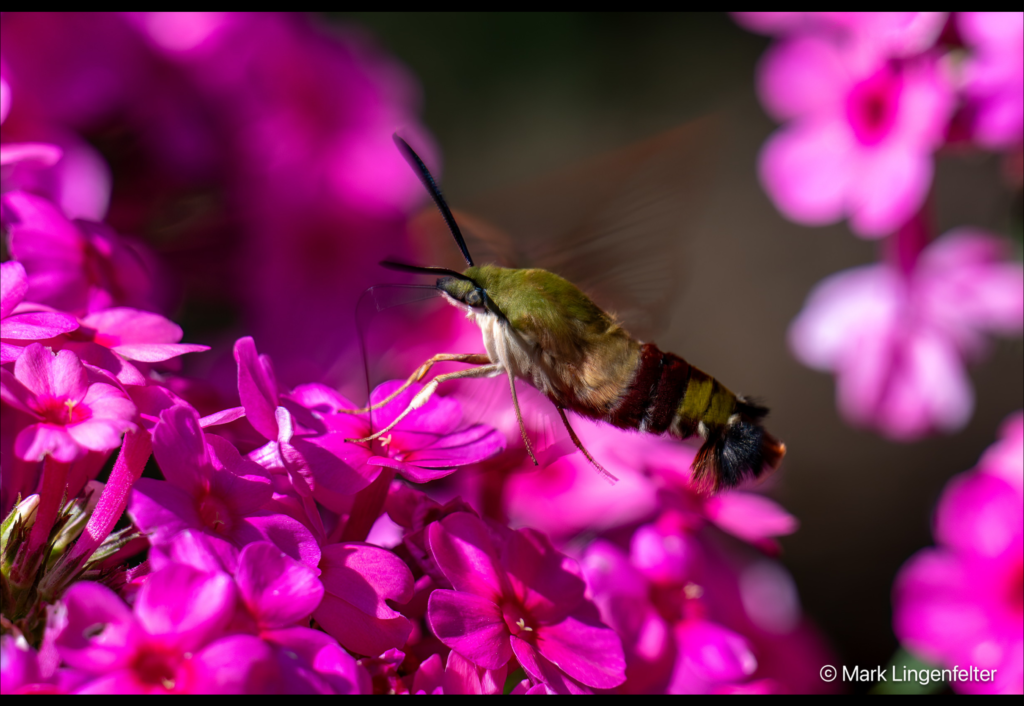
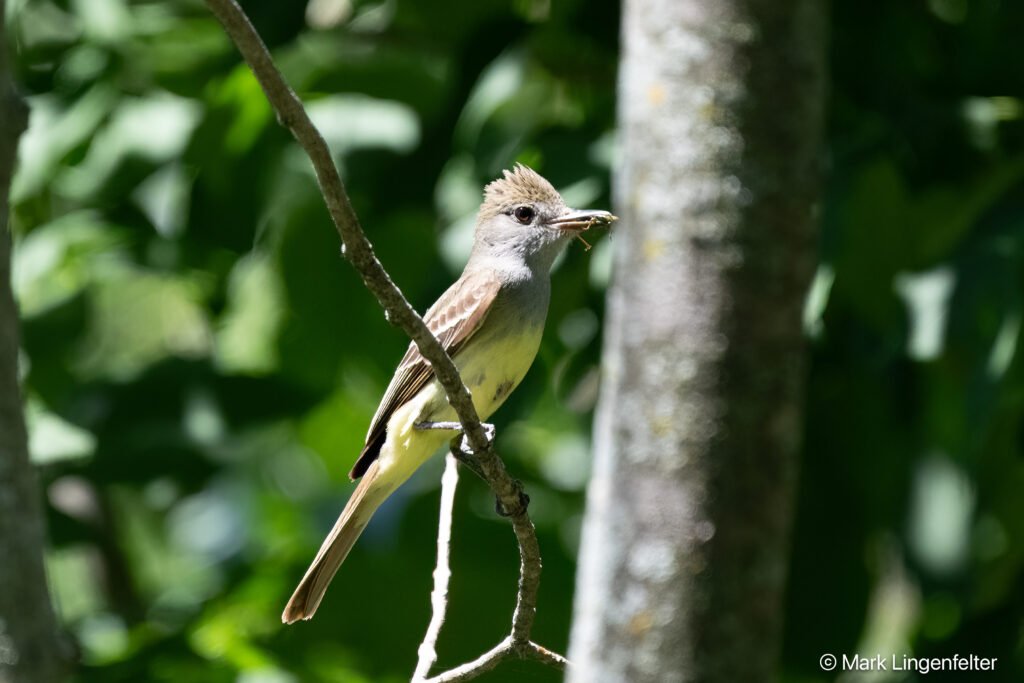
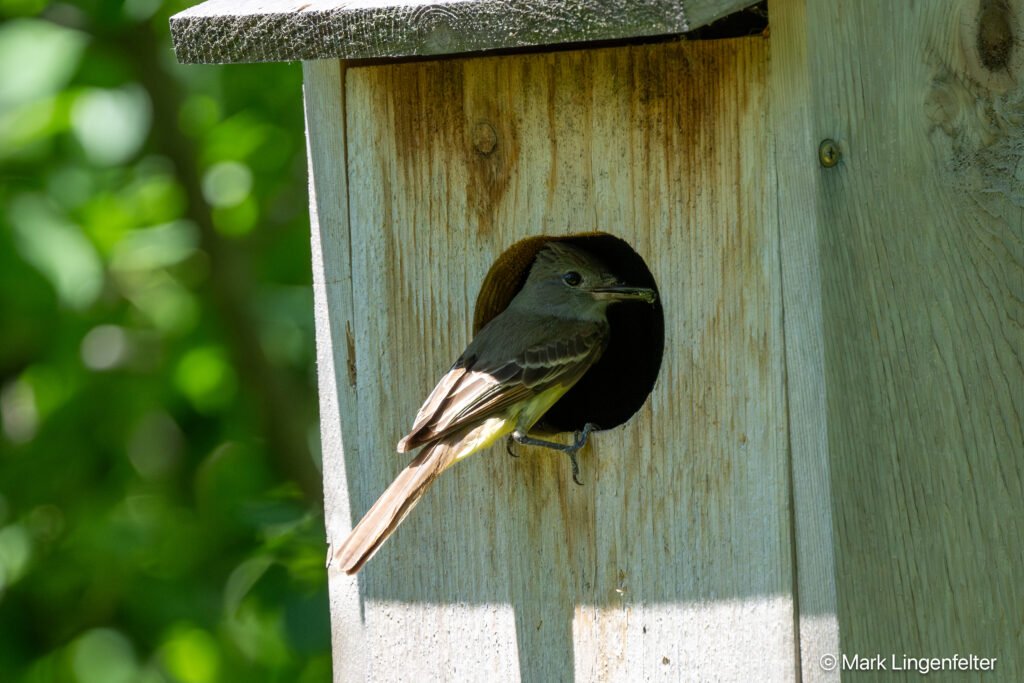
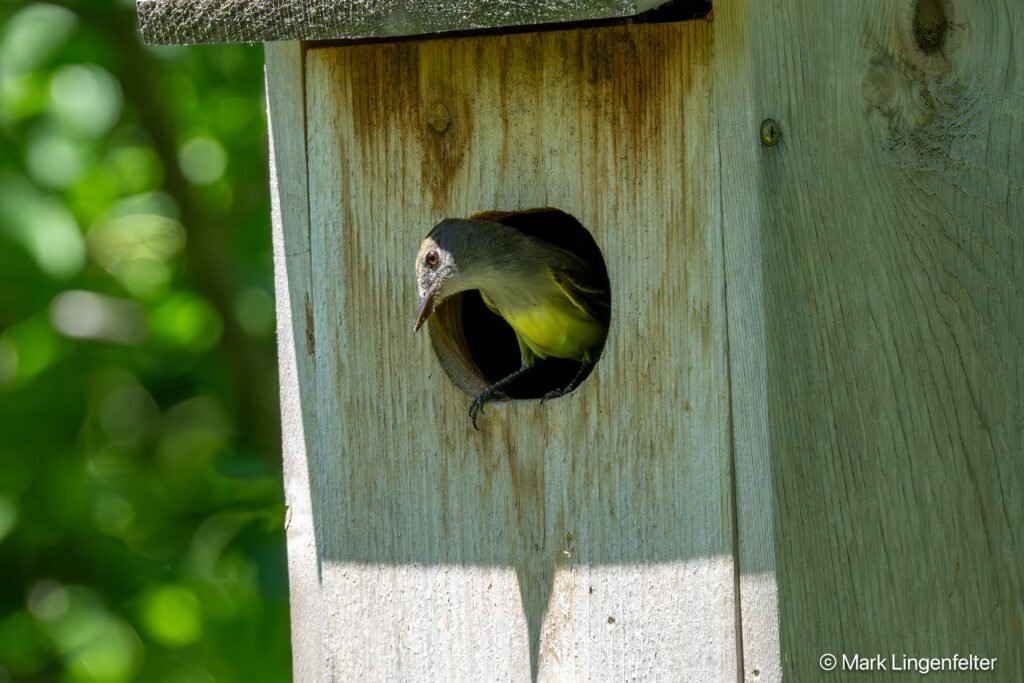
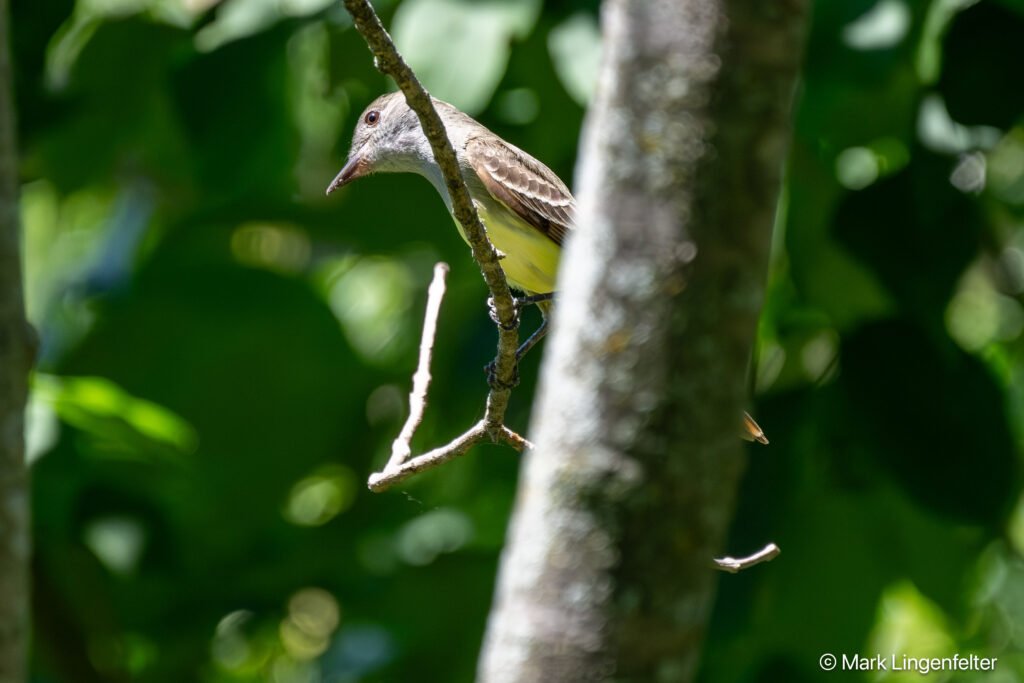
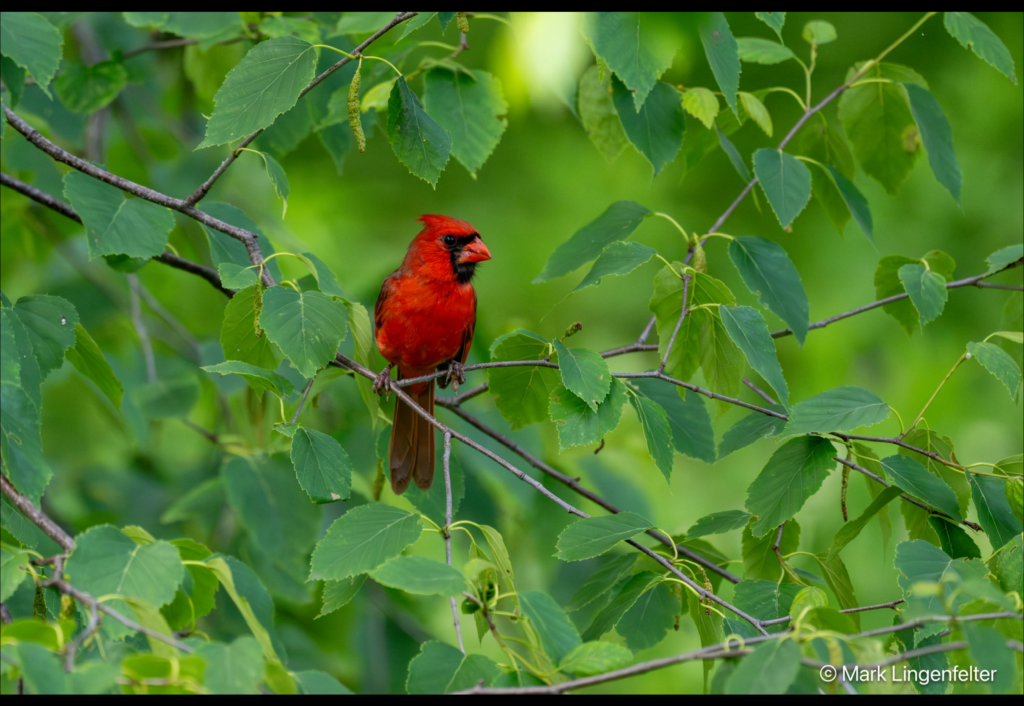
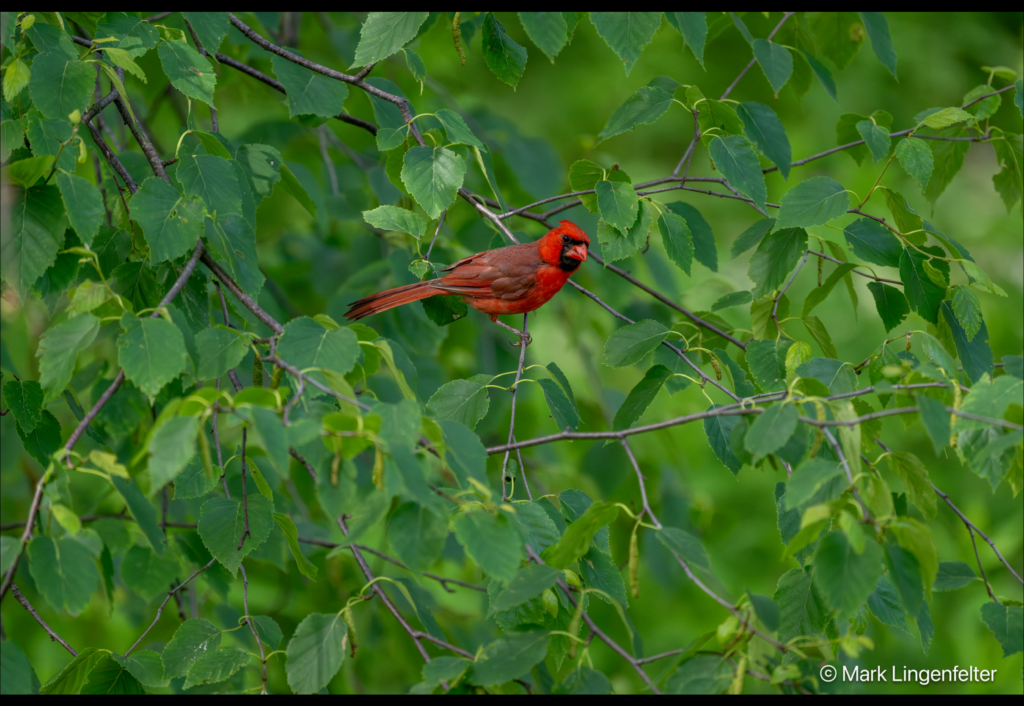
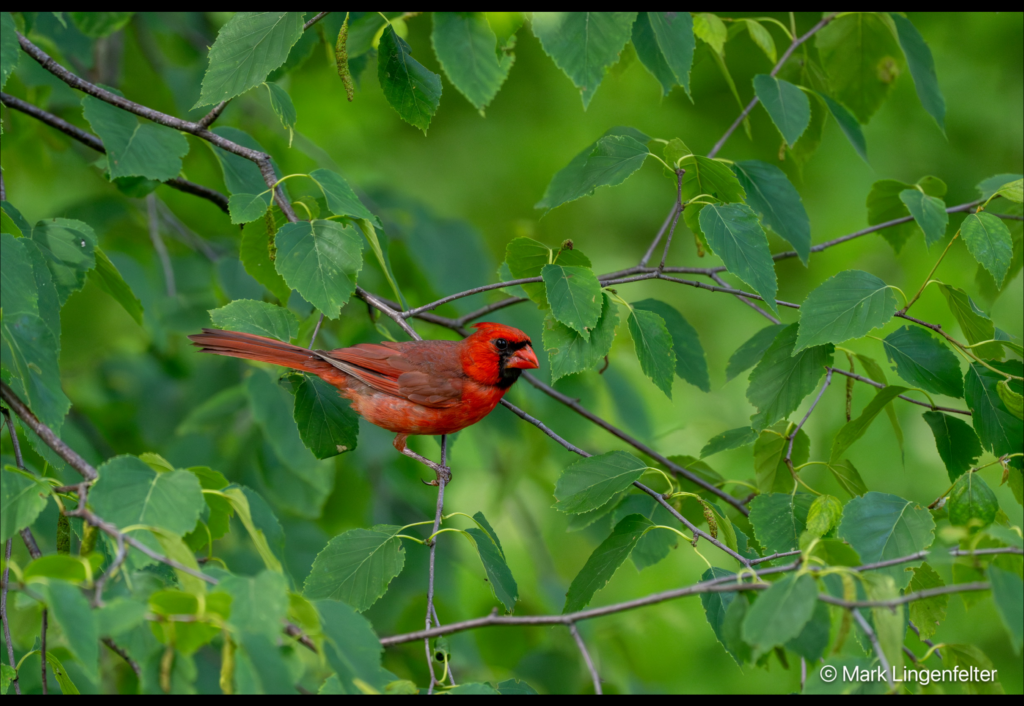
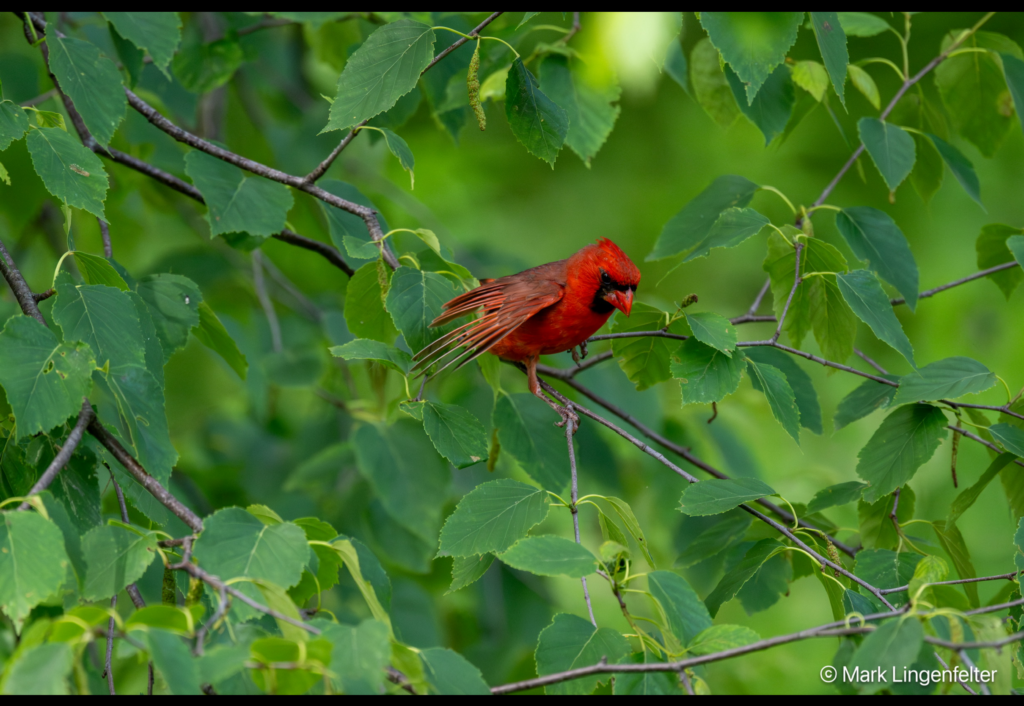
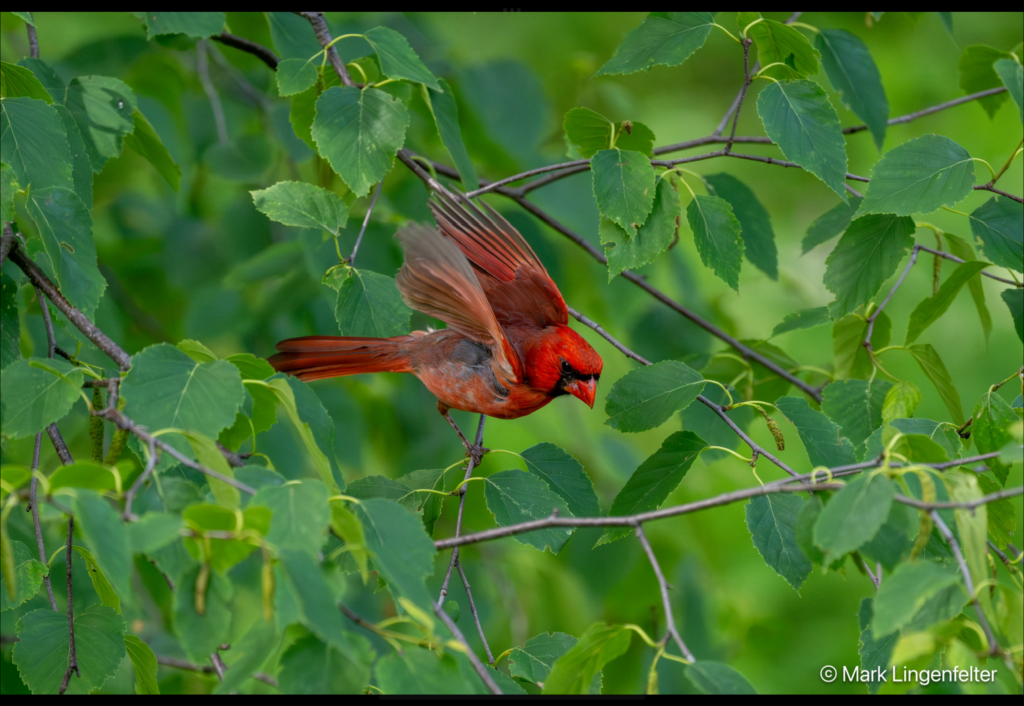
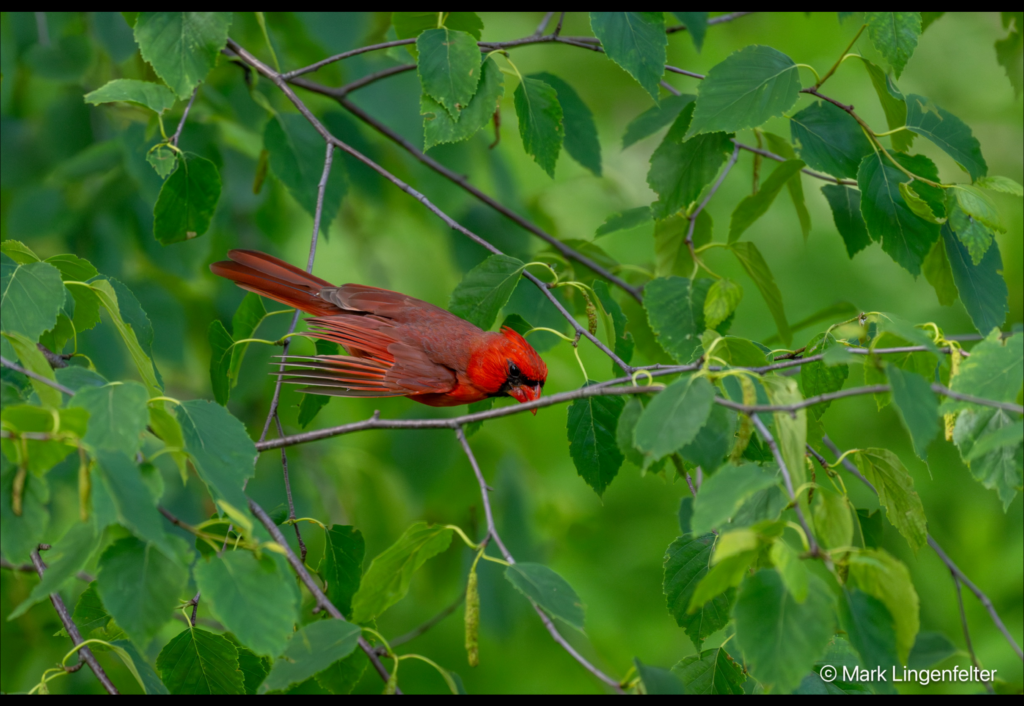
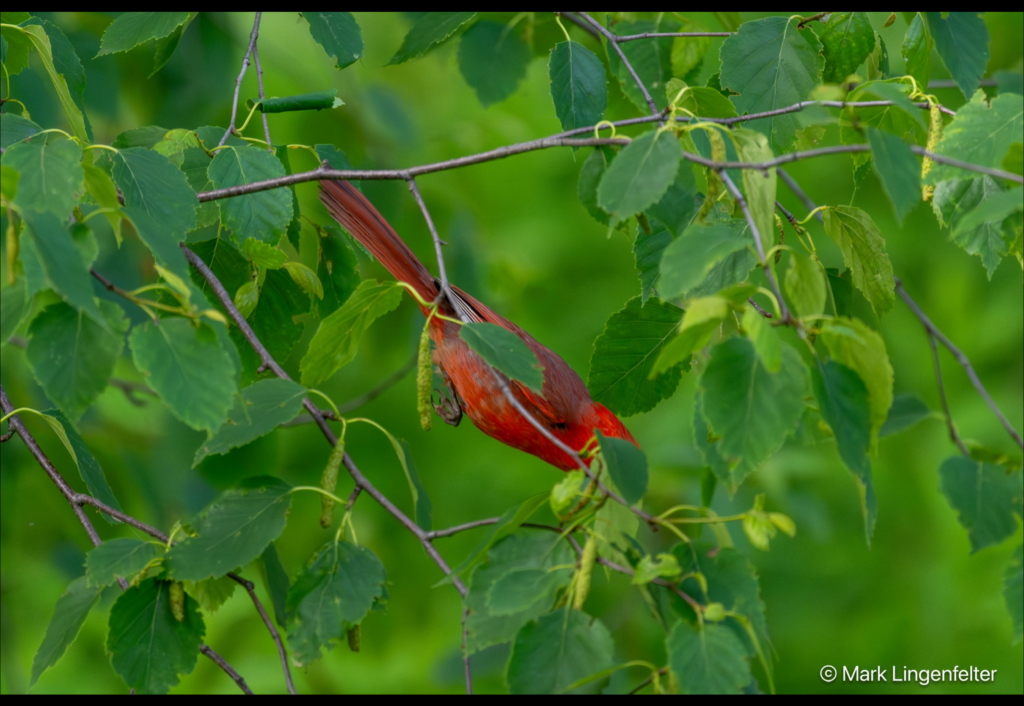
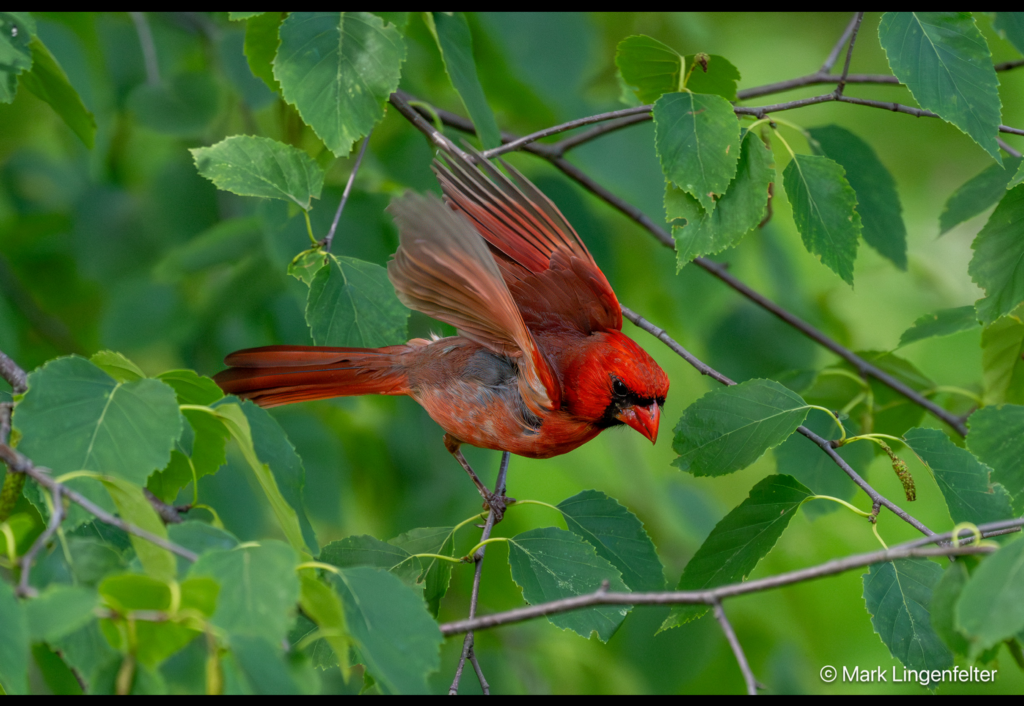
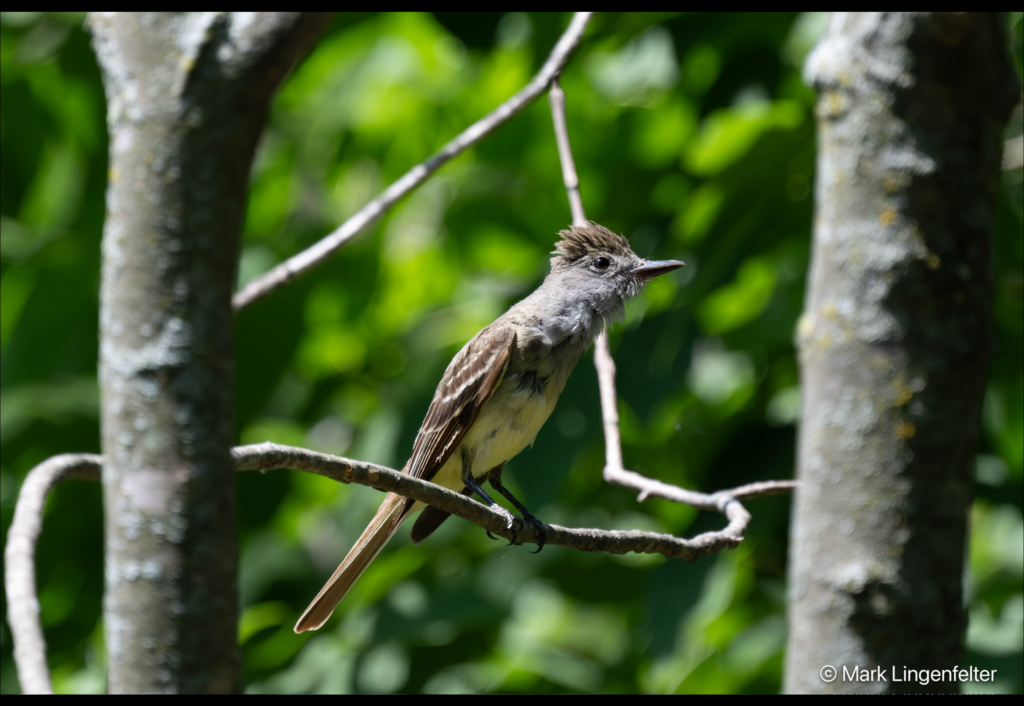
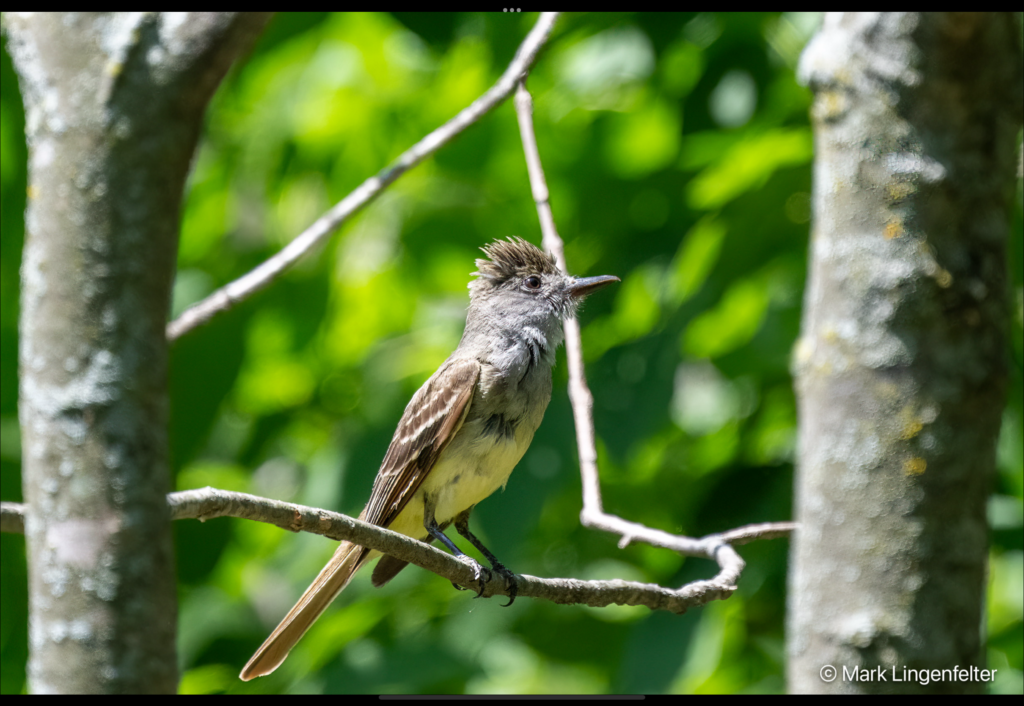
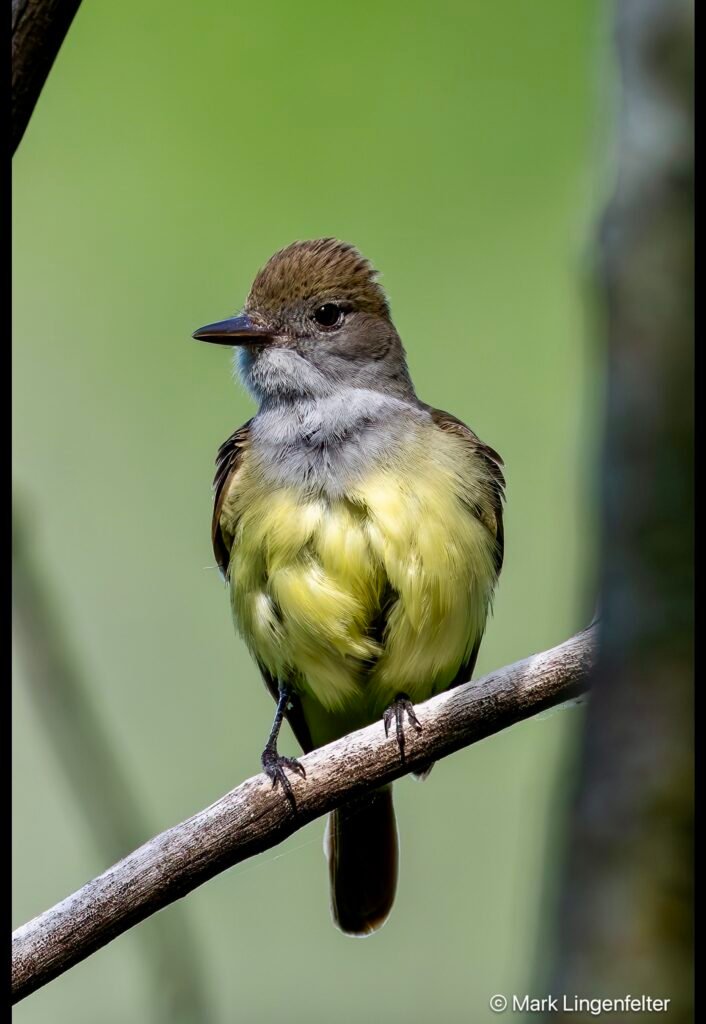
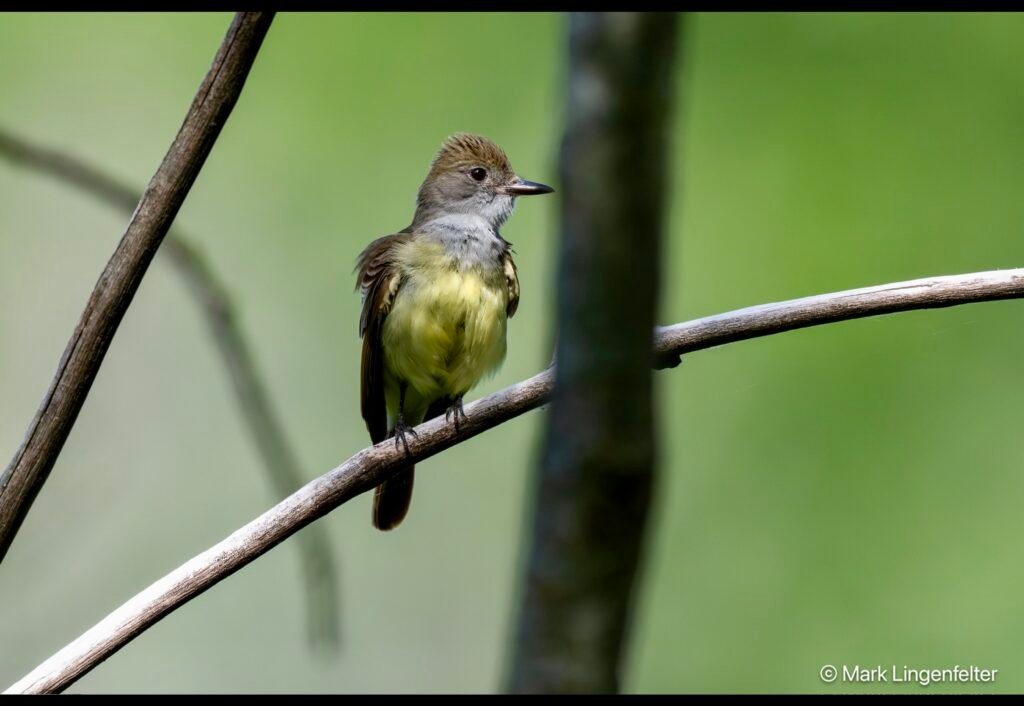
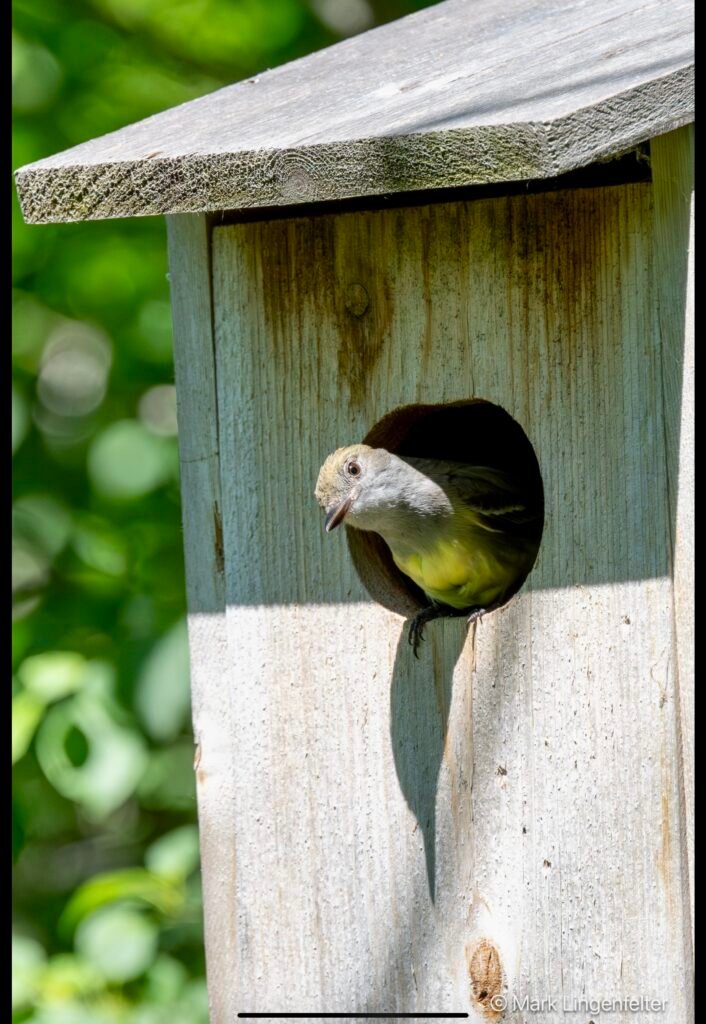
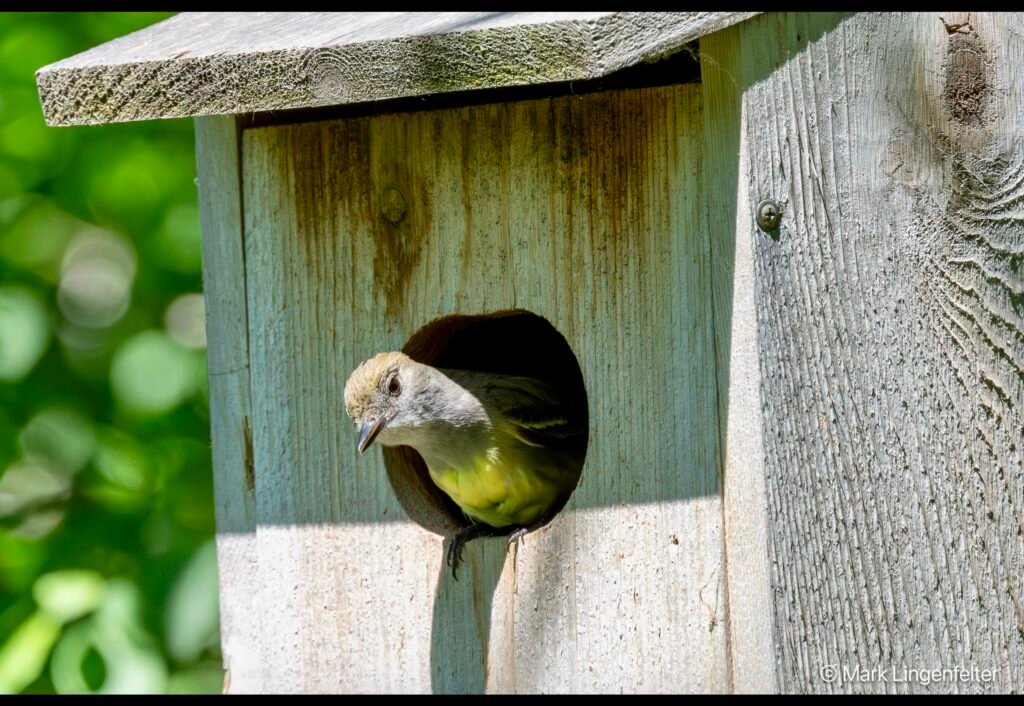
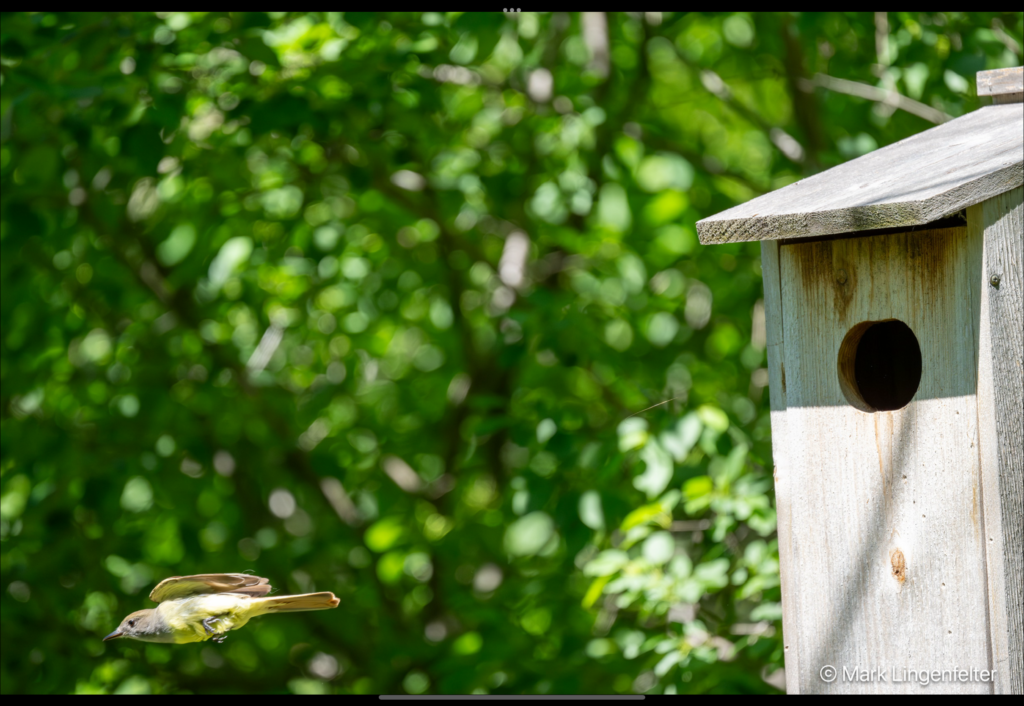
Be the first one to comment!